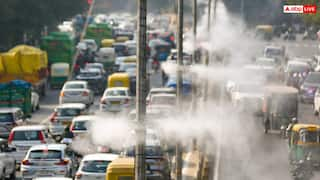What Caused The Landslides In Wayanad? Scientist Links Devastation To Changes In Arabian Sea
A climate scientist has said that the warming of the Arabian Sea is allowing the formation of deep cloud systems, leading to heavy rains in Kerala and increasing the possibility of landslides.

The landslide in Wayanad in Kerala has led to the deaths of over 150 people and injured 200 others. Over 180 people are still missing after the tragic incident and more than 300 houses were completely destroyed in the landslides that hit the Mundakkai and Chooralmala areas of the district.
The rescuers from the Army, Navy and NDRF were looking for survivors on Tuesday night by unearthing the debris and breaking into the remains of houses destroyed or covered up with mud in the landslides.
The series of landslides were triggered by extremely heavy rain in the hilly areas of Kerala's Wayanad district which led to the tragic deaths.
A senior climate scientist has said that the warming of the Arabian Sea is allowing the formation of deep cloud systems, leading to extremely heavy rainfall in Kerala in a shorter period and increasing the possibility of landslides.
S Abhilash, director of the Advanced Centre for Atmospheric Radar Research at Cochin University of Science and Technology (CUSAT), said, "Kasargod, Kannur, Wayanad, Calicut and Malappuram districts have been receiving copious rainfall due to the active monsoon offshore trough affecting the entire Konkan region for the last two weeks."
"The soil was saturated after two weeks of rainfall. A deep mesoscale cloud system formed off the coast in the Arabian Sea on Monday and led to extremely heavy rain in Wayanad, Calicut, Malappuram and Kannur, resulting in localised landslides," he said, according to PTI.
The clouds were very deep, similar to those seen during the 2019 Kerala floods, Abhilash said.
He said that the scientists have noticed a trend of very deep cloud systems developing over the southeast Arabian Sea, and added that sometimes, these systems intrude into the land, like in 2019.
"Our research found that the southeast Arabian Sea is becoming warmer, causing the atmosphere above this region, including Kerala, to become thermodynamically unstable," Abhilash said.
This atmospheric instability, allowing the formation of deep clouds, is linked to climate change. Earlier, this kind of rainfall was more common in the northern Konkan belt, north of Mangalore.
With climate change, that rain-bearing belt with deep clouds is extending southward and this is the main reason behind such extremely heavy rainfall, Abhilash said.
According to a research by Abhilash and scientists from IITM and IMD, one of the hotspots of heavy rainfall in the Konkan region (between 14 degrees north and 16 degrees north) seems to have shifted southward with likely fatal consequences.
An increase in rainfall intensity may suggest a rising probability of landslides in the high to mid-land slopes of the Western Ghats in eastern Kerala during the monsoon seasons, the study said.
According to the India Meteorological Department, several automatic weather stations in Thrissur, Palakkad, Kozhikode, Wayanad, Kannur, Malappuram and Ernakulam districts recorded rainfall between 19 cm and 35 cm. Most automatic weather stations of the IMD in the region recorded rainfall above 24 cm in 24 hours. Some stations installed by farmers recorded more than 30 cm of rain, Abhilash said.
The Met Office said very heavy rainfall could occur in some places in the state over the next two days.
Related Video
Bengal Assembly: Amit Shah Gives BJP Leaders Winning Mantra for Bengal 2026 Elections
Top Headlines





































